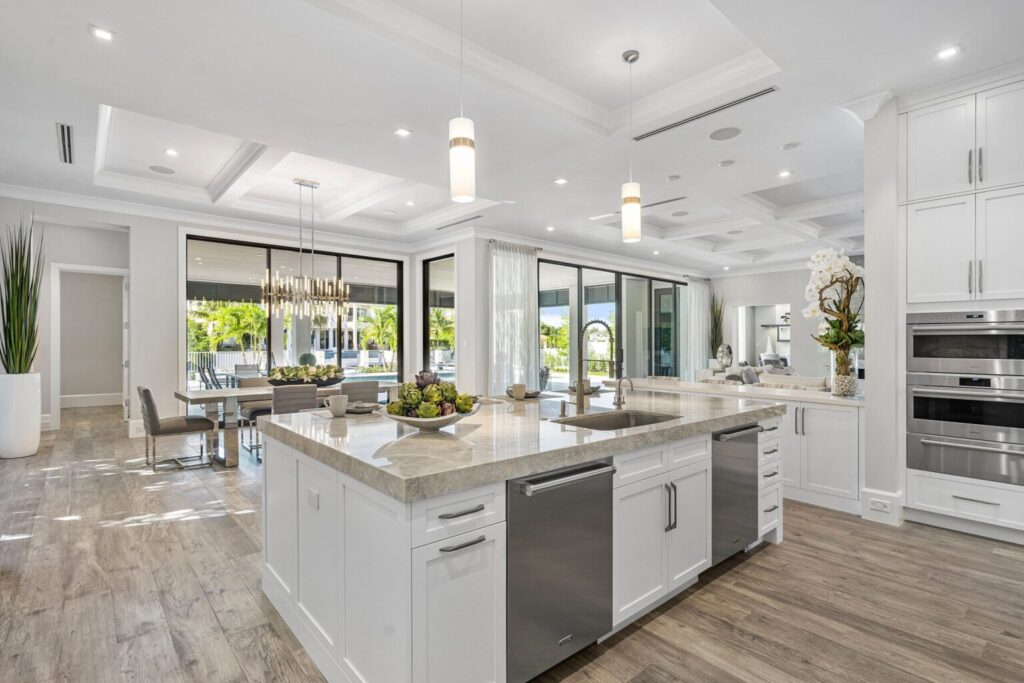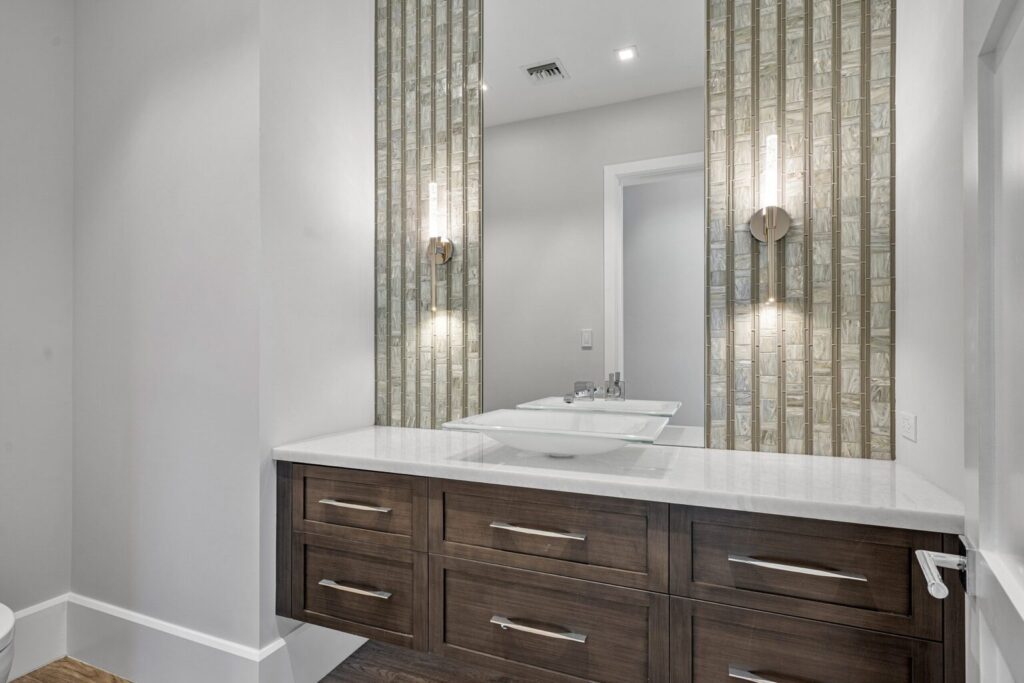10 Timeless Interior Design Trends That Are Still Popular Today
Beyond mere functionality, lighting has the power to enhance aesthetics and create a sense of harmony within our homes. However, relying on just one source of light can result in a lackluster environment.
When you incorporate a mix of natural and artificial lighting, you create dynamic spaces and accentuate furniture, textures, and decor. Find out how to use different types of lighting and how they work in modern interior design in Boca Raton.

How to Use Different Types of Lighting in Your Space
Natural Lighting
Natural lighting, often considered the gold standard in interior design, refers to illumination provided by sunlight. This type of lighting creates openness and connection to the outdoors, making rooms feel larger and more inviting. It can also promote well-being and help you showcase the architectural features of a space.
Incorporating natural light into your home design involves creating several openings to allow sunlight to penetrate indoors:
- Maximize Window Placement: Strategically position windows to maximize the entry of natural light into your home. Consider the orientation of your property, the path of the sun throughout the day, and potential obstructions such as neighboring buildings or trees.
- Get Larger Windows: Larger windows and floor-to-ceiling glass panels amplify the amount of sunlight entering your space.
- Choose Light-Enhancing Materials: Select materials for window treatments, such as sheer curtains or blinds, that allow natural light to filter through while still providing privacy and UV protection.
- Install Skylights or Light Tubes: Include skylights or light tubes into areas of your home that receive limited natural light, such as corridors, bathrooms, or interior rooms.
- Use Reflective Surfaces: Introduce reflective surfaces, such as mirrors, glass tabletops, or glossy finishes, to bounce natural light deeper into your space. Place mirrors strategically opposite windows or doors to amplify the brightness and create the illusion of a larger, more open room.
Ambient Lighting
Ambient lighting, also known as general lighting, provides overall illumination to a room and ensures it’s adequately lit without glare or harsh shadows. This lighting sets the foundation for a comfortable and functional space, making it suitable for everyday activities such as socializing, relaxing, or navigating through the room.
Common fixtures used for ambient lighting include:
- Ceiling-mounted lights
- Recessed lights
- Wall sconces
The key to effective ambient lighting is to achieve uniform illumination throughout the space while maintaining a balanced brightness level that complements other lighting sources. Here’s how you can achieve this:
- Select Appropriate Fixtures: Choose ceiling-mounted lights, recessed lighting, or wall sconces that distribute light evenly across the room. Opt for fixtures with diffusers or shades to soften the light and prevent harsh glare.
- Strategic Placement: Position ambient lighting fixtures evenly throughout the room to avoid dark spots or areas of excessive brightness.
- Layered Lighting: Supplement ambient lighting with other types of lighting, such as task lighting and accent lighting, to create a layered effect.
Task Lighting
Task lighting is focused illumination designed to facilitate specific activities such as reading, cooking, or working. Unlike ambient lighting, which provides general illumination, task lighting targets particular areas where additional light is needed for optimal visibility and task performance.
Examples of task lighting fixtures include desk lamps, under-cabinet lighting, and pendant lights positioned above work surfaces. Task lighting should be adjustable to accommodate individual preferences and tasks, ensuring adequate brightness without causing glare or discomfort.

Accent Lighting
Accent lighting is used to highlight architectural features, artwork, or decorative elements within a space, adding depth, drama, and visual interest. It creates focal points and directs attention to specific areas or objects. Track lighting, picture lights, and recessed spotlights are some common accent lights used in interior design.
Follow these tricks to incorporate accent light in your modern space:
- Identify Focal Points: Single out the artwork and decorative elements in your space that you want to highlight, such as a fireplace, a feature wall, or a sculpture.
- Choose the Right Fixtures: Select accent lighting fixtures that complement the style and scale of your space. For example, track lighting is ideal for highlighting multiple objects or areas, while picture lights are best for illuminating individual pieces.
- Positioning is Key: For artwork, picture lights should be installed approximately 30 inches above the center of the piece and angled at around 30 degrees for optimal illumination. Track lighting fixtures can be adjusted to direct light where it’s needed, while recessed spotlights should be positioned to graze or wash over architectural features or textured surfaces.
- Experiment with Bulbs and Colors: Consider using LED bulbs with adjustable color temperatures to create different atmospheres in your space.
Decorative Lighting
Finally, decorative lighting works as both functional fixtures and statement pieces. Chandeliers, pendant lights, and sculptural lamps are some examples. Decorative lighting allows you to express your personal style and create a cohesive and stunning interior space.
If you want to choose the perfect decorative lighting, these tips might help:
- Consider Scale and Proportion: A large chandelier may overwhelm a small dining area, while a tiny pendant light may get lost in a spacious foyer. Take measurements and visualize how the fixture will fit within the room to ensure it complements the scale.
- Match Style to Decor: Look for fixtures with finishes, materials, and shapes that align with the design theme to create a cohesive look.
- Don’t Forget the Ceiling Height: For rooms with higher ceilings, pick fixtures with elongated designs or vertical elements that draw the eye upward. In rooms with lower ceilings, opt for flush or semi-flush mount fixtures to avoid cluttering the space.
- Utilize Dimmer Switches: Install dimmer switches for your decorative lighting fixtures to have control over the brightness level and create various lighting scenes.

